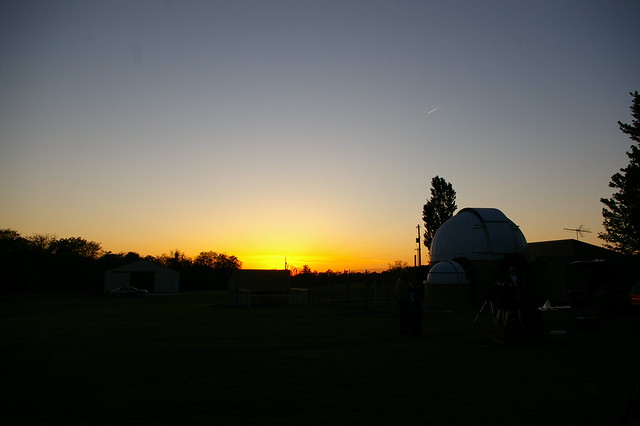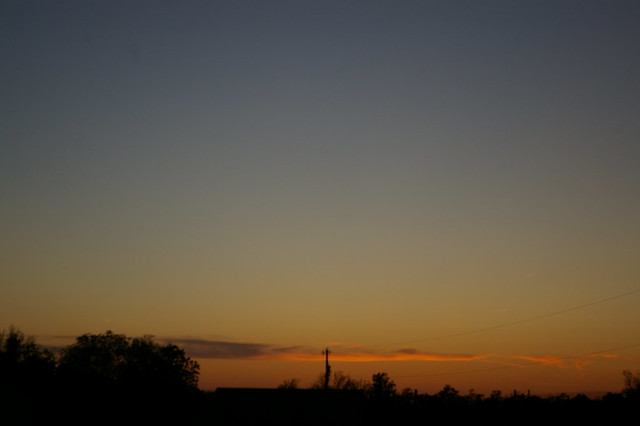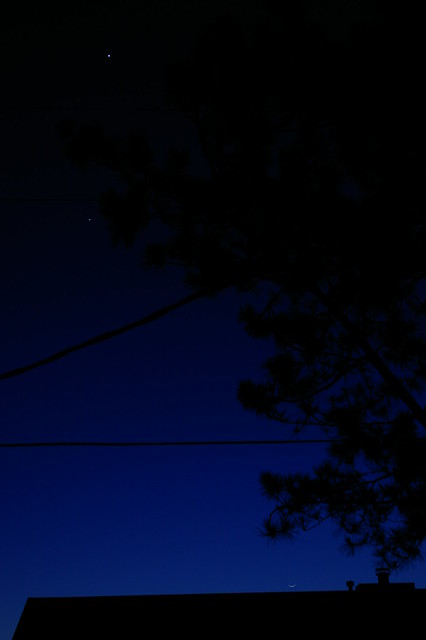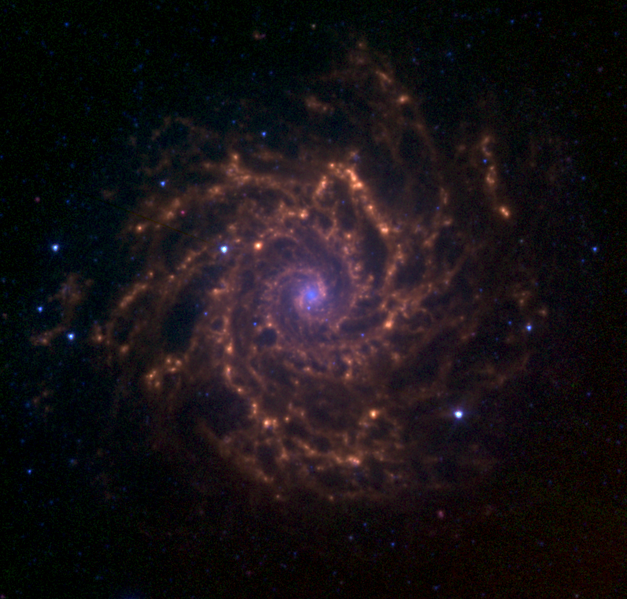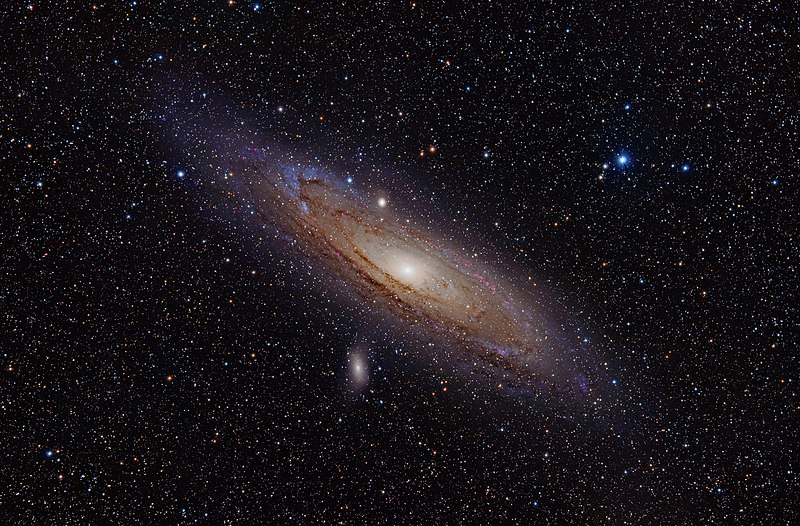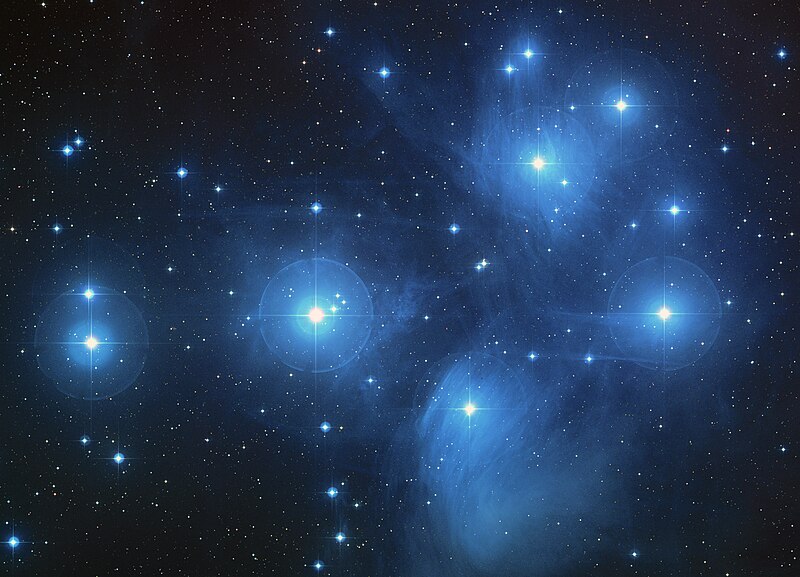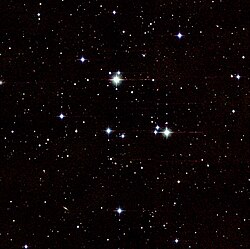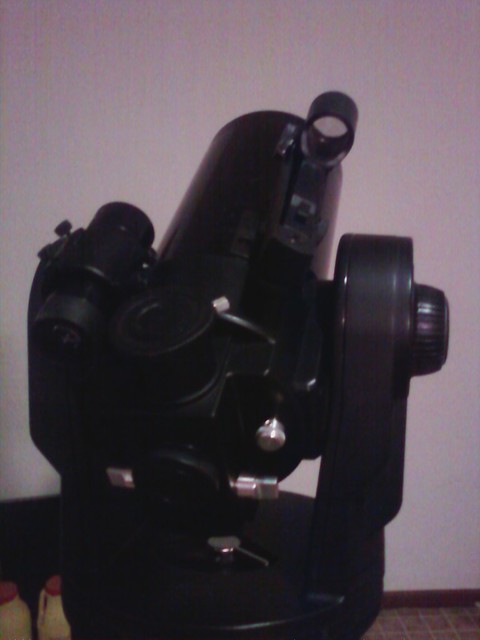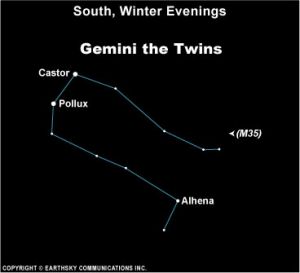
Even though Friday dawned overcast and gloomy, by noon, I could see bits of blue among the dissolving puffs of grey and white. I received an early confirmation e-mail from ASKC announcing the ‘go live’ time for the astronomy club’s star party at Powell Observatory in Louisburg, Kansas. I had already invited Dad to come as my guest and not only because Terry already had plans. The weather forecast predicted clear skies, but cold temperatures, reaching mid-40s by midnight on the observing field.
I left work at the usual time and retrieved all my riders, returning them safely home without delay. Not even the race activities at the Kansas Speedway slowed me down when I dropped off my first rider, who lives within spitting distance of that facility. We all could hear the cars racing around the track, not for a race, but more likely for practice or qualifying.
 I got home and realized I had forgotten to print a map with directions from Lansing to Louisburg and wrangled Terry into printing one for me. While I was waiting on the printout, my Dad arrived, bringing me a beautiful rose from his garden. He placed it smack dab in the center of my table, but I didn’t notice it until I knocked over the vase with my camera bag. Then, I mistakenly thought Terry had stolen a rose from one of our neighbors. Dad had a hard time not laughing himself silly, especially since he tried to let Terry take the credit for the impromptu flower appearance. I thanked Dad for the gift while I mopped up the spilled water with a spare towel.
I got home and realized I had forgotten to print a map with directions from Lansing to Louisburg and wrangled Terry into printing one for me. While I was waiting on the printout, my Dad arrived, bringing me a beautiful rose from his garden. He placed it smack dab in the center of my table, but I didn’t notice it until I knocked over the vase with my camera bag. Then, I mistakenly thought Terry had stolen a rose from one of our neighbors. Dad had a hard time not laughing himself silly, especially since he tried to let Terry take the credit for the impromptu flower appearance. I thanked Dad for the gift while I mopped up the spilled water with a spare towel.
I changed clothes, grabbed a sweater with a hood, my scarf, my gloves, a gallon of water, my water bottle, my camera bag and tripod and my purse. Dad already had the rest of the gear in his trunk. We rolled south out of Lansing by a quarter to six. We stopped briefly in Bonner Springs for a quick supper and continued down K-7 to Shawnee Mission Parkway, then to I-435 and eventually US-69. Louisburg is less than twenty miles south of Overland Park, so once we rounding the curve where I-35 crosses I-435 (where the mile markers for I-435 start at zero (0) and end at eight-three (3), we had less than a half hour of driving to reach the observatory. We pulled into the park just a bit after seven o’clock in the evening.
The star party organizer for the ASKC was already on site. He greeted us and we all began debating where to setup on the observing field around Powell. He was concerned about a baseball game or practice that appeared to be occurring on a ball field just northwest of the site. He drove over and asked the participants if they planned to turn on the field lights. He returned to confirm the lights would be on until 9:30 p.m. Thus, all of us decided to setup on the east side of the Powell Observatory building, letting it block the lights to help protect our night vision.
Dad and I unpacked the gear and hauled it across the observing field to a spot just southeast of the dome. I setup my camera and tripod to take a couple of photos of the sunset.
As predicted, the lights lit up the field, and competed with the glow of Kansas City sufficing the northern horizon. Dad and I waited patiently (him more than me) for enough stars to pop forth to attempt an alignment of the telescope. While we waited, I took a few more photos of the western horizon, mostly to capture the very bright Venus.
Soon after we spotted Venus, Sirius made its appearance in the southwestern sky. Once Arcturus crested over the trees in the northeast, we used both those stars for an alignment of the ETX-90 via the Autostar device. We did a quick tour of the four visible planets, starting with Venus. Even though Venus is a thinning crescent (as it moves towards us and between the Earth and the Sun), it is almost too bright to look at. Without adding a filter to the eyepiece, I couldn’t look directly at it for more than a few seconds. Next we caught Jupiter before it set in the west. I spotted all four moons, but only for the first few minutes. As it sunk closer and closer to the horizon, the haze and humidity obscured all but the planet itself from visibility.
Next we swung the telescope back to the southeast, but nearly directly overhead (about ten or eleven o’clock above us) to view Mars. While I debated internally what higher magnification eyepiece to insert, the star party organizer joined Dad and I at our telescope. He commented that he had owned a similar scope in years past and affirmed it was a good scope for planetary and lunar observing. He took a quick look through the eyepiece at Mars and moved on to the next person on the field. One of my goals for the evening was to decide if the small ETX-90 would allow me to view any deep sky objects (galaxies in particular).
Our final planetary tour stop landed on Saturn, which crested over the trees soon after we finished observing Mars. I easily found Titan, Saturn’s largest moon, but could not discern the gap(s) between the rings, even after adding the two times Barlow to the 25mm eyepiece I prefer to use.
Orion had his left foot on the western horizon as I swung the scope back to the southwest for a quick peak at the Great Orion Nebula. As far as I could tell, it looked similar to what I had seen from my back yard in late March. At that time, Orion’s Sword appeared much higher in the sky and I looked through less atmosphere (but had more light pollution in Lansing). But the combination of less light, yet more atmosphere gave me basically the same observing experience.
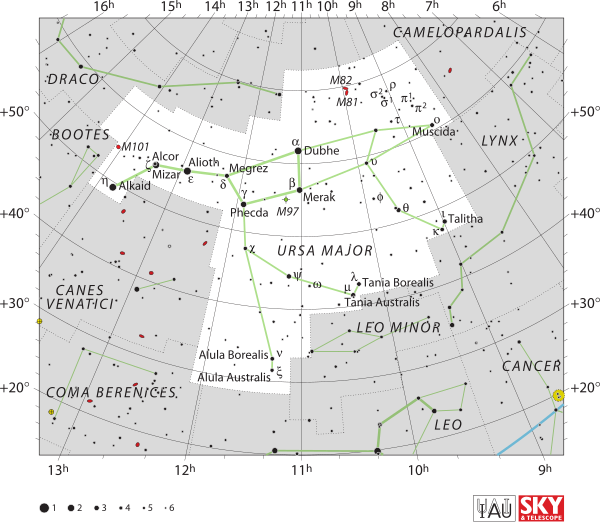
At this point, I took a break to spare my aching feet and sat in one of the chairs Dad had brought along. The north wind had died off by this time, but I couldn’t seem to get my toes enough circulation. The rest of me, my head, hands, upper body and legs, were fine. But my toes continued to be a distraction and eventually a source of chilling pain. I used my red flashlight to review several star charts in my pocket sky atlas, searching for a deep sky object that would be (hopefully) visible via my small scope. I settled on the Whirlpool Galaxy found near the first star (Alkaid) in the handle of the Big Dipper. As you can see in the chart above, just below and to the right of Alkaid is where you should find the Whirlpool Galaxy. Even with a red dot viewfinder to help, neither Dad nor I could locate the galaxy. It only has a magnitude of 8.4, and I fear the increasing glow from Kansas City to our north and the rising humidity as the temperature dropped to the dew point conspired against our efforts.
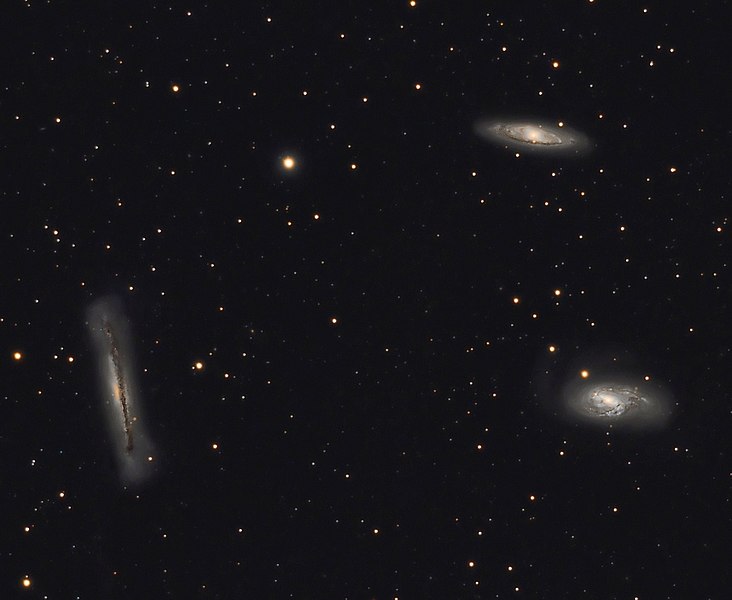
Before I could pick up my pocket sky atlas to find some other deep sky object to try, the star party organizer returned, asking us if we wanted to see the Leo Triplet, three galaxies visible all at the same time. While not as clear as the photo at the left, I did see all three galaxies through his telescope in one field of view. Amazing! Once I returned to my scope, I directed it to find Mars (which still hovers near Leo) to confirm the alignment and then told it to find M65 (one of the two galaxies on the right hand side of the photo above. I believe I saw a grey smudge or two, but not the third fainter elongated galaxy (on the left above). Since Leo still appeared directly overhead, and Louisburg to the southeast does not sport nearly as much light as Kansas City to the north, I had good conditions for seeing such faint objects (magnitude 9 and 10).
At this point, I could barely stand on my aching chilled feet any longer. I sat for a few minutes, letting my eyes wonder around the sky in hopes of seeing a few meteors. I did see two. I asked Dad if there was anything else he wanted to observe. I think he returned to Saturn for a final look at the ringed giant. After that, we dismantled the equipment and packed it back up (all in the dark with a dying red flash light). We made several trips across the observing field to the car.
As Dad started up the car (and I turned the heat for the passenger side all the way up to red hot), the clock on the dash flashed 11:00 p.m. We pulled out of the parking lot with only our parking lights on (to minimize light for those still observing) and stopped at McDonalds so I could buy a mocha. All three convenience stores in Louisburg had closed (not extremely convenient for us obviously). We retraced our route up US-69, through Overland Park, to I-435 and took Parallel Parkway back to K-7 and arrived back in Lansing just after midnight.
After this excursion, I believe I need to start saving my pennies for an upgrade. I still plan to use the ETX-90 to observe the Transit of Venus. The small scope is actually a boon for observing our closest star, Sol and our sister planet, Venus. I just need the solar filter film, currently on back order, to prevent damage to my eyes and the scope.
Thanks to the Astronomical Society of Kansas City for hosting the star party. Dad and I had an enjoyable evening.

